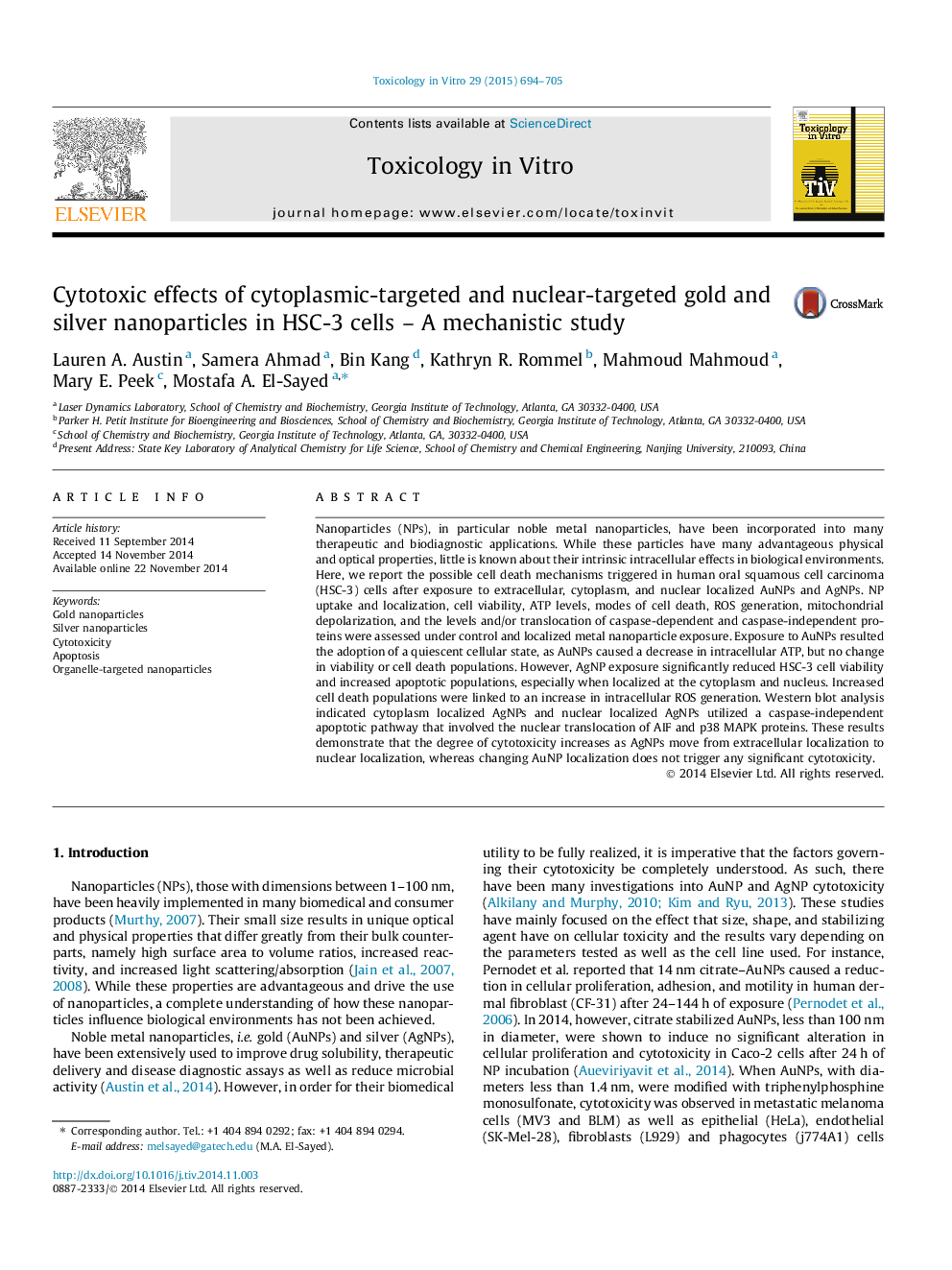| Article ID | Journal | Published Year | Pages | File Type |
|---|---|---|---|---|
| 5861901 | Toxicology in Vitro | 2015 | 12 Pages |
â¢Nuclear-targeted NPs showed increased uptake and cytotoxicity in HSC-3 cells.â¢Nuclear-targeted AuNP exposure induced a quiescent cellular state.â¢ROS generation and mitochondrial depolarization increased with AgNP exposure.â¢Cytoplasmic and nuclear-targeted AgNPs triggered caspase-independent apoptosis.
Nanoparticles (NPs), in particular noble metal nanoparticles, have been incorporated into many therapeutic and biodiagnostic applications. While these particles have many advantageous physical and optical properties, little is known about their intrinsic intracellular effects in biological environments. Here, we report the possible cell death mechanisms triggered in human oral squamous cell carcinoma (HSC-3) cells after exposure to extracellular, cytoplasm, and nuclear localized AuNPs and AgNPs. NP uptake and localization, cell viability, ATP levels, modes of cell death, ROS generation, mitochondrial depolarization, and the levels and/or translocation of caspase-dependent and caspase-independent proteins were assessed under control and localized metal nanoparticle exposure. Exposure to AuNPs resulted the adoption of a quiescent cellular state, as AuNPs caused a decrease in intracellular ATP, but no change in viability or cell death populations. However, AgNP exposure significantly reduced HSC-3 cell viability and increased apoptotic populations, especially when localized at the cytoplasm and nucleus. Increased cell death populations were linked to an increase in intracellular ROS generation. Western blot analysis indicated cytoplasm localized AgNPs and nuclear localized AgNPs utilized a caspase-independent apoptotic pathway that involved the nuclear translocation of AIF and p38 MAPK proteins. These results demonstrate that the degree of cytotoxicity increases as AgNPs move from extracellular localization to nuclear localization, whereas changing AuNP localization does not trigger any significant cytotoxicity.
Graphical abstractDownload full-size image
